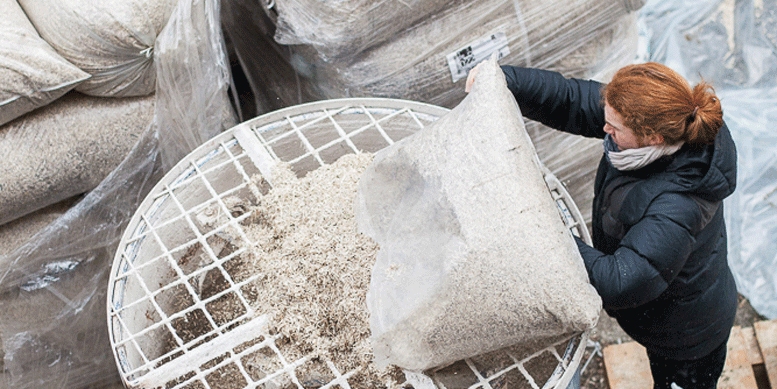By Robert Ziner, CIHC, Canada
According to the United Nations Environment Programme (UNEP), the conventional building sector contributes up to 30% of total annual greenhouse gas emissions globally. Left unchecked, those emissions will more than double in the next 20 years. Hemp can help.
Hemp-based construction projects, both residential and commercial, can already be found around the globe, including in the USA. While hemp-based material costs are relatively high, that’s only because of the limited number of suppliers, which often means shipping what’s essentially simple straw long distances.
Healthier living spaces
Hemp building materials, made from the plant’s stems, are gaining acceptance primarily because they create healthier living spaces. According to the U.S. Green Building Council (USGBC), hemp is a non-toxic feedstock that delivers a number of unique properties for a broad range of building applications.
Hemp stems offer two important byproducts for the construction industry. The plant’s stringy exterior, or bast fibers, provide a cost-competitive, sustainable alternative to fiberglass batts as an insulation material. Hemp bast fiber insulation creates an airtight mass with minimal heat loss, and will not mold or mildew. The use of this insulation enables any structure to automatically fulfill LEED design standards for energy efficiency. Hemp bast fiber insulation also has excellent acoustic and high-level fire-resistance capabilities.
The stalk’s thick inner core (hurd, shivs or shives), chopped and mixed with lime and water to create hempcrete, makes for excellent hempcrete walls, and solutions for both load-bearing and non-load-bearing hemp building materials are already on the market.
Energy efficient
Structures built from hempcrete are highly energy efficient due to low thermal conductivity, high thermal capacity and high insulation values. Testing has shown that a hempcrete home is about 80% more energy efficient than a conventional build in temperature control, and delivers an annual CO2 carbon “reduction” of about 8,000 kg. Significantly, hemp-based insulation and finished products stay energy efficient throughout their installed life. How long is that? In Nagano, Japan, there is a national heritage site honoring a hemp house built in 1698 – more than 300 years ago. It’s still standing!
Although the construction costs of hempcrete can be as much as 10% higher than traditional wooden residential structures covered in siding, lower energy costs offset much of the difference. Hempcrete construction is already directly competitive in price with brick-veneer structures. And hemp materials bring the added benefits of lower heating and air-conditioning costs as well as better ventilation throughout the enclosed structure. Perhaps most importantly, hemp construction materials create a healthier, more comfortable living space.
Prices for hemp hurd are expected to come down as hemp straw processing initiatives get off the ground to supply more quality hemp fiber products to the market.
Carbon sequestration
Considered to be the most energy-efficient building material on the market today, hempcrete is also an amazing carbon sequestration tool.
Back up the building materials production chain, growing hemp addresses serious issues that have been pointed out by, among others, the UN Intergovernmental Panel on Climate Change, which has recommended that farmers focus on the restoration of over-cultivated and worn-out soil as the easiest way to reduce the global carbon footprint. Soil is a potent, relevant carbon storage medium and contains more carbon than the atmosphere and all living greenery combined. Hemp plants actually increase and redefine the natural ability of the land to absorb “surplus” carbon, the Panel advised.
Soil improvement
Growing hemp improves the soil it is grown in. The roots go deep and draw in toxins from the ground, as well as CO2 from the air, right into the plant itself where it is stored in the cell walls – permanently. One crop of industrial hemp grown on one acre can annually absorb 10 tons of CO2 from the atmosphere, and sequester 4.2 tons.
Hemp is nature’s greatest carbon sequestration tool and its fiber provides unique properties – significant properties, which make it invaluable in the ongoing global effort to control climate change. Hemp, and hemp building, can ultimately pay a pivotal role in reversing the growing CO2 buildup which now threatens mankind, and the entire planet.

Robert Ziner is Founder & CEO, Canadian Industrial Hemp Corp. (CIHC), Toronto, which is developing an advanced hemp stalk processing and optimization system. Ziner has more than 30 years in the building materials distribution and secondary wood processing industries.

